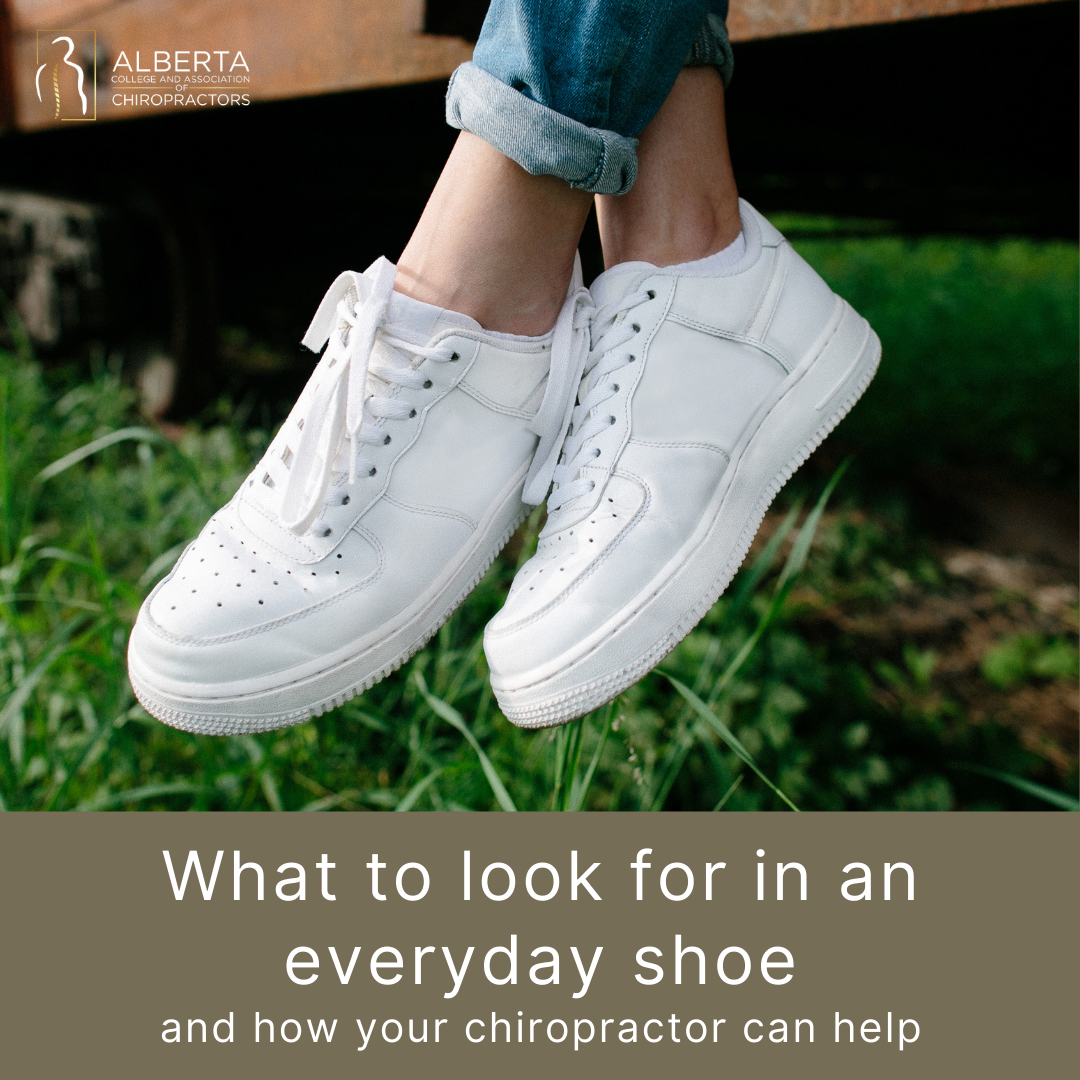Part 3 of 3
When it comes to everyday shoes, many of us don’t put much thought into the pair we grab from the closet. However, our everyday shoes often end up being the ones we spend the most time in. Whether it’s running errands, taking the dog for a quick walk around the block, or heading to the grocery store, it’s important to choose shoes that will keep us comfortable and supported. And because we tend to use these shoes so often, they’re more susceptible to wear and tear. So, if your everyday shoes are looking a little rough, check out these tips below from Sherwood Park-based chiropractor Dr. Taylor Cooksley on choosing an everyday shoe that will keep you comfortable, safe, and supported through everything life throws your way.
Why does choosing the right shoe matter?
“Foot pain doesn’t just start and end in the foot—it can be the source of much bigger pains in your body.”
Dr. Cooksley has seen first-hand the impact that untreated foot conditions can have. “When patients come in with foot pain, just based on my assessment I can usually predict what other issues are going to present themselves in the future if they haven’t already,” she explains.
Foot pain is often the culprit for things like hip or lower back pain, which is why it’s so important to be assessed by a chiropractor to ensure you’re treating the correct pain source. Choosing the correct shoe is the first step in ensuring you are looking after your overall joint health.
What should you be looking for?
When we throw on a shoe for a quick errand, we may be tempted to ignore discomfort, holes, or tightness because it’s short-term. But even short stints with improper shoes can have large consequences down the line. Here’s what you should look for in an everyday shoe.
Comfort
Your everyday shoe should be comfortable to walk in for long periods of time, not cause any pinching or rubbing, and have enough cushioning that you don’t feel every pebble on the sidewalk. While most shoes have a break-in period, try to choose a shoe that is comfortable right from the start. Remember—you’re going to be using this shoe more often than any other.
For sandal-lovers, make sure to try on the sandal and do a test walk. If any part of your foot (heel, toe, sides of the foot) is hanging over the edge of the sole of the sandal, it’s not a great fit. These minor overhangs can cause you to make small changes to the way you walk, which can take big tolls on your body.
Proper spacing
While it’s ideal to buy a shoe that fits what you’ll be wearing it with (a sock, pantyhose, barefoot, etc.), an everyday shoe will likely see all of the above. So, try to find a shoe that fits comfortable for the situation you’re most often in. If you typically throw on socks and runners, find a shoe that’s comfortable with socks on.
Getting the right fit will prevent various conditions like bunions, plantar fasciitis, and hip and back pain.
Cushioning
When trying on shoes at the store, stand up and walk around and pay attention to how your foot feels—it should feel supported and cushioned. Whether you love wearing runners or sandals for your outings, a properly cushioned shoe will help keep your errands pain-free.
Sturdiness
Choosing a shoe with supports like arch support will help long-term in keeping injuries, strains, or sprains away. Better yet, talk to your chiropractor about getting custom orthotics.
How can a chiropractor help?
Chiropractors are specially trained in diagnosing and treating musculoskeletal-related conditions, which includes your feet. If you’re experiencing pain when you walk, a chiropractor can assess the pain and recommend a treatment plan.
What are orthotics?
Orthotics are insertable soles for your shoes that can provide more cushioning, comfort and support to your foot.
You’ve likely seen orthotics at your local pharmacy or shoe store—these off-the-shelf orthotics typically provide you with more cushioning, but don’t offer much support. Though these orthotics are good in a pinch, they aren’t usually a long-term solution.
Your feet naturally have slight variances in size and step which can create unique conditions in each foot.
If your right foot is bigger, you may experience more rubbing in your right shoe, leading to bunions or an altered step. If you naturally favour your right leg, you may experience more pain in that foot. Because your feet are not the same, store-bought orthotics won’t perfectly address each individual problem—that’s where your chiropractor can help.
Chiropractors will carefully assess each foot and custom-design orthotics that will provide proper cushioning, comfort and support to each individual foot.
We hope that these tips help you to choose work shoes that balance style and comfort.

